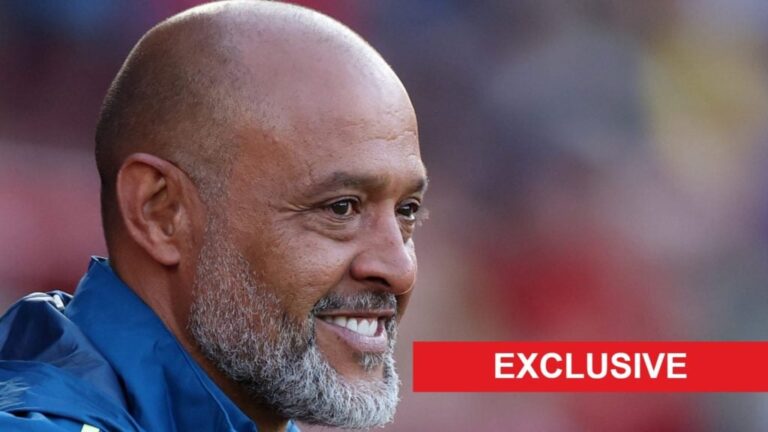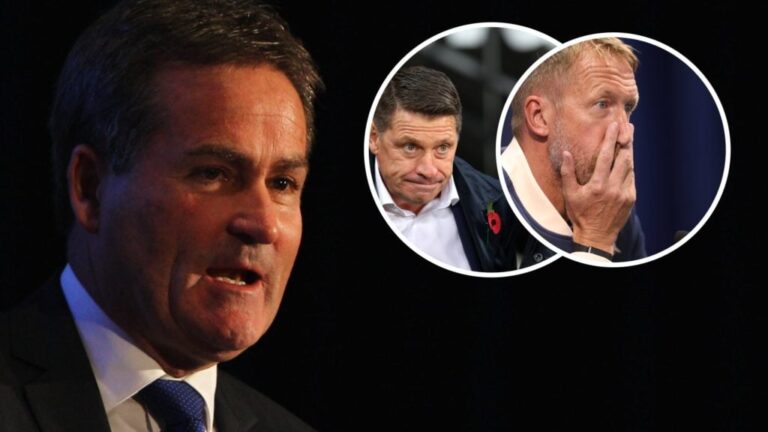When it comes to statement or even memorable West Ham United performances under Graham Potter, very few come to mind.
Yes, the Hammers did secure impressive wins away at Arsenal and Manchester United last season. Yes, they beat Nottingham Forest 3-0 at the City Ground only a month ago. But also three of those – accounting for half of Graham Potter’s six victories in charge – can be viewed through a less-flattering lens.
Arsenal were woefully ineffective going forward that day, even if West Ham United’s defending deserved real credit. Manchester United were in the midst of yet another existential crisis. And Nottingham Forest imploded at the City Ground, on what would be Nuno Espirito Santo’s final game in charge.
If, as expected, Potter leaves the London Stadium during the October international break, he will depart having left barely an imprint on the fabric of West Ham. The same cannot be said of Gary O’Neil. The Hammers-linked head coach who, while having left Wolves in December 2024 after a dismal start to the season, masterminded one of their greatest-ever Premier League victories with that 4-2 shellacking of Chelsea at Stamford Bridge.
Hammers News can confirm that former midfielders Frank Lampard and Scott Parker are liked by sporting director Mark Noble. As is the now-unattached Michael Carrick. O’Neil, who played 56 games in claret and blue during the early 2010s, would be a less headline-grabbing appointment, but a potentially inspired one.
While Nuno Espirito Santo’s system seems well-suited to many of the players at West Ham’s disposal – Crysencio Summerville, Mateus Fernandes and Max Kilman especially – that four-goal destruction of Chelsea in February of last year offers a glimpse into how Gary O’Neil might look to use Lucas Paqueta and Jarrod Bowen if he is given the gig.

How Gary O’Neil could use Jarrod Bowen and Lucas Paqueta at West Ham United
O’Neil used a 3-4-2-1 system that day. Similar, on paper, to the one Potter tried and shelved during a disastrous start to 2025/26, yet far more coherent and effective in practice.
And while various West Ham bosses have taken to using Bowen as a number nine, the then-Wolves coach utilised the searing pace Pedro Neto through the middle in an attempt to exploit Thiago Silva’s lack of mobility.
Thus, stretching the pitch in transition, and also giving Matheus Cunha the chance to wreak havoc in the sort of ‘left-ten’ position which could also be key to unlocking the very best of Paqueta.
Given that Cunha scored a hat-trick in that thumping West London victory, O’Neil’s methods worked wonders. There is a reason that this was the game he was picked to analyse on the Coach’s Voice Masterclass channel.
“[Hwang] Hee-chan was our only real number nine and he suffered an injury, so we went with Pedro Neto as a sort of makeshift number nine and Matheus Cunha in this sort of number ten position,” O’Neil recalls. “It just suited Pedro on the day.
“We know he loves to operate on the right flank, coming inside onto his left foot, but it just suited us on the counter-attack. [We had to be] flexible. The squad had real quality but it did lack a bit of depth. So when we suffered an injury in this area, we had to be quite creative.
“Thiago Silva [played] on this left side and we tried to get Pedro Neto up against him if we could. Obviously, [Silva was] a top centre-back. But Pedro, with the speed he had, we felt we could try and exploit some spaces.”
Hammers skipper Bowen could thrive as a mobile forward in transition
A left-footed right-winger capable of darting in behind opposition defences and dragging his team up the pitch with mazy dribbles. Sounds familiar, right? A
nd while O’Neil admits he preferred an aggressive, high-pressing gameplan, it speaks to his flexibility and humility that he was willing to adapt his strengths against certain opposition while enjoying great success with a ‘unique’, one-off set-up.
“Because we had real pace, as they turned the ball over, we were able to get these lovely runs from Pedro up against Thiago Silva. We did a lot of work in the week [focusing on], ‘can we get our first pass forward in transition? If we win the ball, let’s not just clear it’. Can we get balls into Matheus feet, or can we get Pedro Neto peeling off into the space against Thiago Silva?’
“That gave us a lovely opportunity to get us up the pitch.”

O’Neil could replicate Matheus Cunha transformation with Paqueta
It was under O’Neil, meanwhile, that Cunha blossomed from a highlight reel footballer into a ruthless, match-winning forward. While Lucas Paqueta lacks his raw speed or dribbling ability, he too could benefit from a simplified approach.
One which reduces his tendency to drop deep – Paqueta often dallies on the ball and gives it away in dangerous areas – and one which maximises his effectiveness in the final third.
“Matheus Cunha would move in sort of as a left-ten. We were working really hard on being able to switch the play and try and get it through into these pockets. Joao Gomes knew to try and narrow up Conor Gallagher and open up this pocket into Matheus Cunha,” explains O’Neil.
Cunha, now at Manchester United, scored the first of that hat-trick from the ‘left-ten’ role in which Paqueta found the net in spectacular fashion against – ironically enough – Chelsea.
“He was a proper Brazilian number ten who wanted to drop down and help us with the ball. We did a lot of work [regarding], ‘Matheus, use this pocket, use this part of the pitch. Then, you are going to get all your chances to score in this area’, where he was naturally fantastic, this inside left channel.
“Matheus wasn’t using this part of the pitch well enough when I got here. He was being used as a nine, drifting.
“[Overall] we were really, really comfortable in keeping the lines close together. It was a really sort of unique, solid away performance. Normally, as a coach, I love getting pressure on the ball. I want us to be aggressive and I want the backline to come up and restrict the spaces. But I just thought it was just better to keep these lines closer together.”



